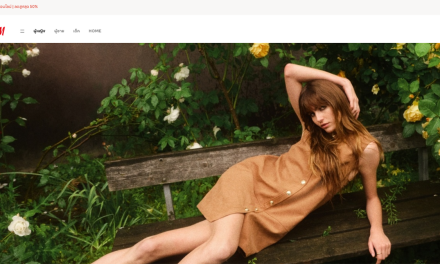In this byline, Kenzie shares his insights on the importance of having an overarching marketing strategy for content creator campaigns.
While trusting your creators as they know their audience the best is true to a certain extent, leaving everything to the creator entirely is not always the best option. There must be a delicate balance between intuition and creator’s creativity, which is strengthened by insights and intelligence provided by data and technology.
There is this notion that creator strategies and big ideas for TikTok, Instagram, or any social media channels are typically limited and lack a balance of campaign direction or product USPs with creator input. If you look closely, there is a fine line in-between them.
Understanding the narrative on both sides of the story
On one hand, we have too much control or no brand direction: the terms “Too salesy and hard selling” are frequent impressions from postings that are entirely directed by the brand. Although it originates from a good place, having your creators check off your extensive list of product USPs sometimes lead to extremely long-winded captions.
Not only does it result in a lack of critical, relevant and genuine messaging towards your audiences, but it is also reflected in the poor outcomes that do not meet the KPIs.
On another hand, leaving it all to the creator may not always be the best option, “Nurturing people’s creative brilliance is also a technique worth investing your marketing expenditure into” according to GWI. However, what happens if they go too far without the necessary guidance and direction? Your brand’s marketing efforts might be cut short.
There have been instances in which creators have taken the “easy” route, with haphazard placements that aren’t well thought out. So, how do you walk this fine line?
Data-backed steps to improve content collaboration
Brands or agencies can develop a framework or a strategy that acts as a guideline rather than a direction, and they can be open to KOL recommendations or crafted with the creator in mind, which ultimately differs between brands, industries, and a creative risk appetite.
Understanding your creator thoroughly and being flexible on how to convey your narrative not only covers your directive/USPs but also extracts the most important element of a creator’s work, the authenticity and relatability of their stories, which contributes to a successful campaign.
Data, of course, plays a major role, but it is paramount for brands to identify creators and design strategy framework by using a few terms below:
- Creator Discovery: Brands need to find the most relevant creators, determining how well the creative matches the brief requirements. The right creator for the brand will represent the topic or maybe has a similar vision to them.
- Audience Sincerity: Rating on the creators’ followers authenticity; Brands need to examine creator’s trustworthiness, percentage of notable followers, geographical reach, age, and gender of their audience, to ensure that they are backed by top-notch creators.
- Trending or Relatable Content: Brands must analyse relevant content space highlights to understand what the target audience is currently discussing in order to drive the brand’s strategy
- Channel Identification: From YouTube to TikTok, the biggest content creators usually have a presence across all social media channels, but it is also crucial to pinpoint what platform is most suitable based on the creators’ statistics.
Finding the balance through technology
As we are aware, technology has come a long way. The right kind of supporting tech is available for brands to have overall visibility and outcome of the campaign strategy. This will allow them to effectively leverage every channel that they place themselves on. Brands will be able to receive thorough insights on the campaign roll out, the need for further amplification via paid social channels and publishers, as well as lower funnel activities. It is crucial for brands to be aware of this data to identify the campaign’s outcome and to review for future campaigns.
Brands can benefit from allowing creators’ creativity and authenticity in messaging or content, but the ones who strike the fine balance are those who verify and use technology to assist the decision making of the right creators and the sort of content they create.
Equipping oneself with this knowledge helps brands create conversations with the right KOLs and assist them in striking a perfect balance on this delicate line, resulting in a campaign that is trustworthy and dependable for both brands and consumers. In the end, brands should understand their campaign or their proprietary insights since this is essential for them and might be a differentiating aspect in enabling them to determine what content and which creator resonates with their audience best.



















